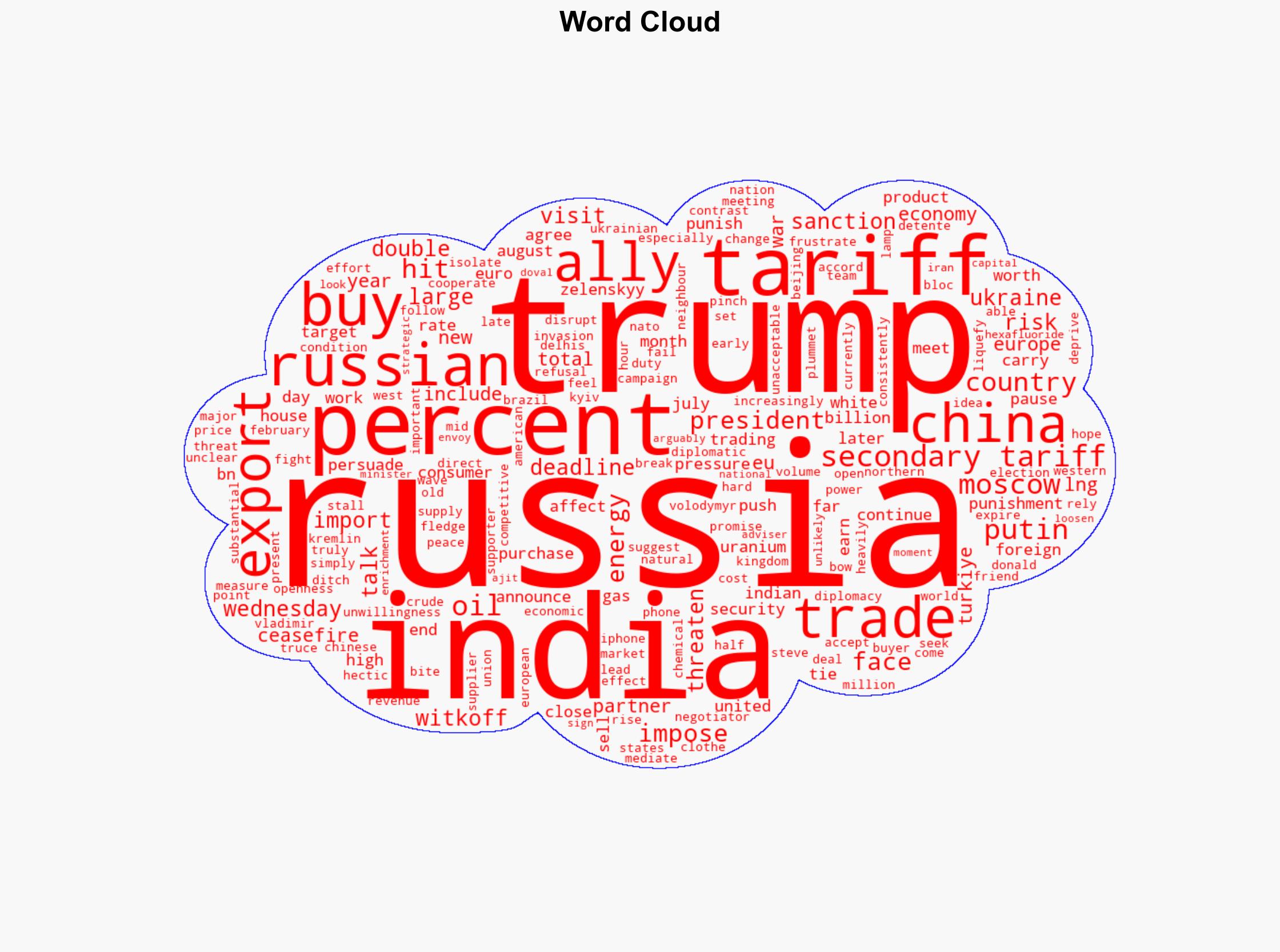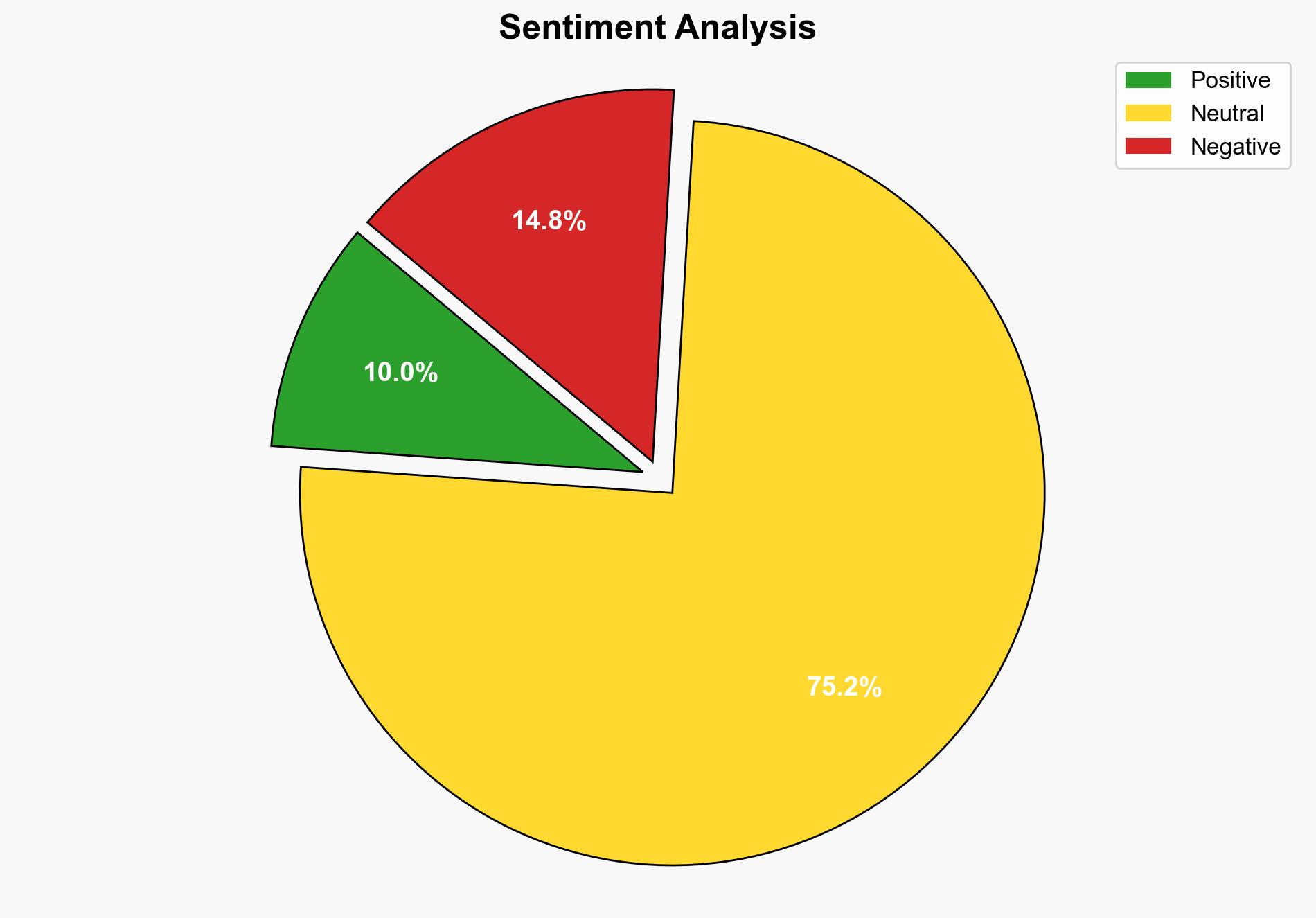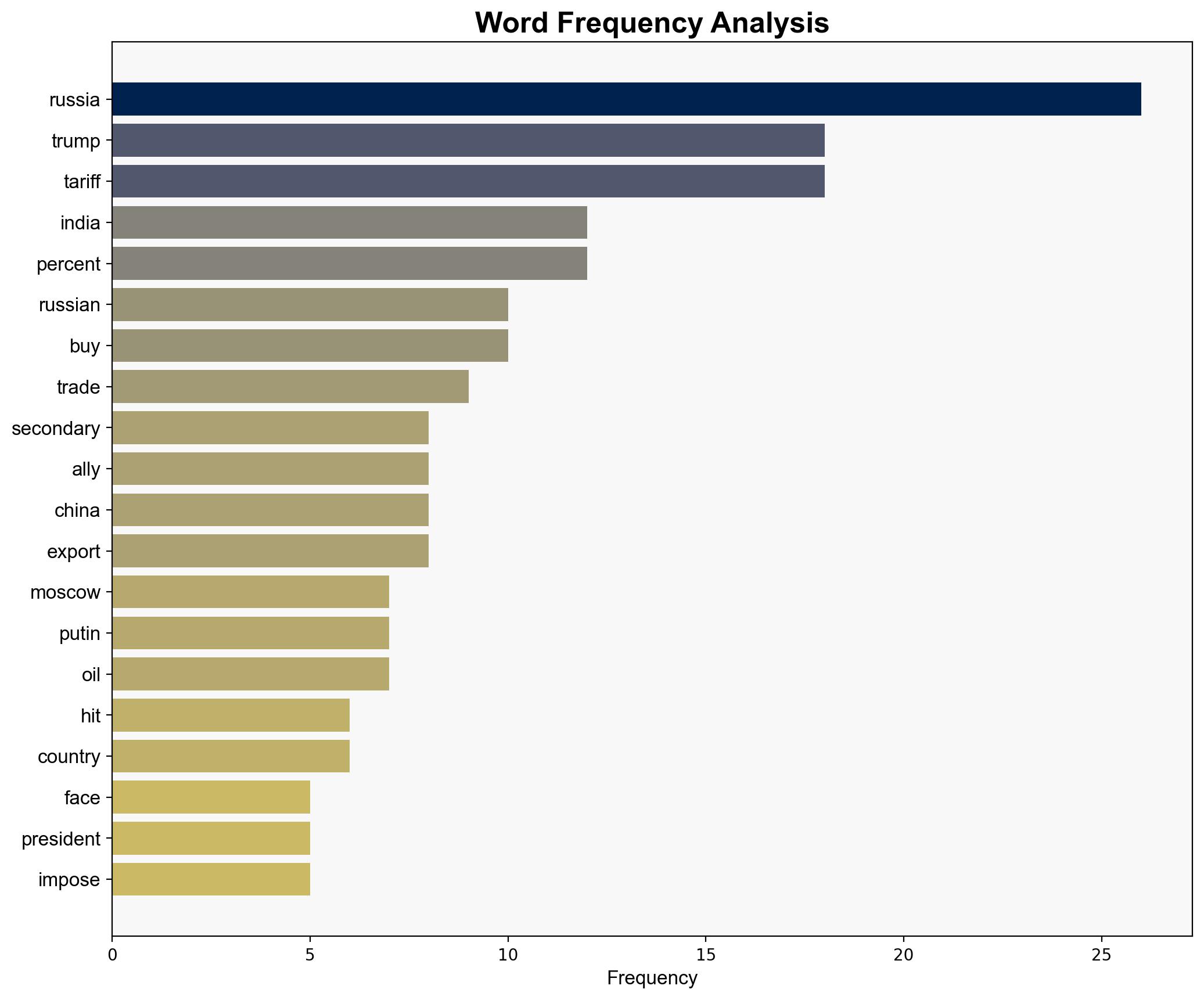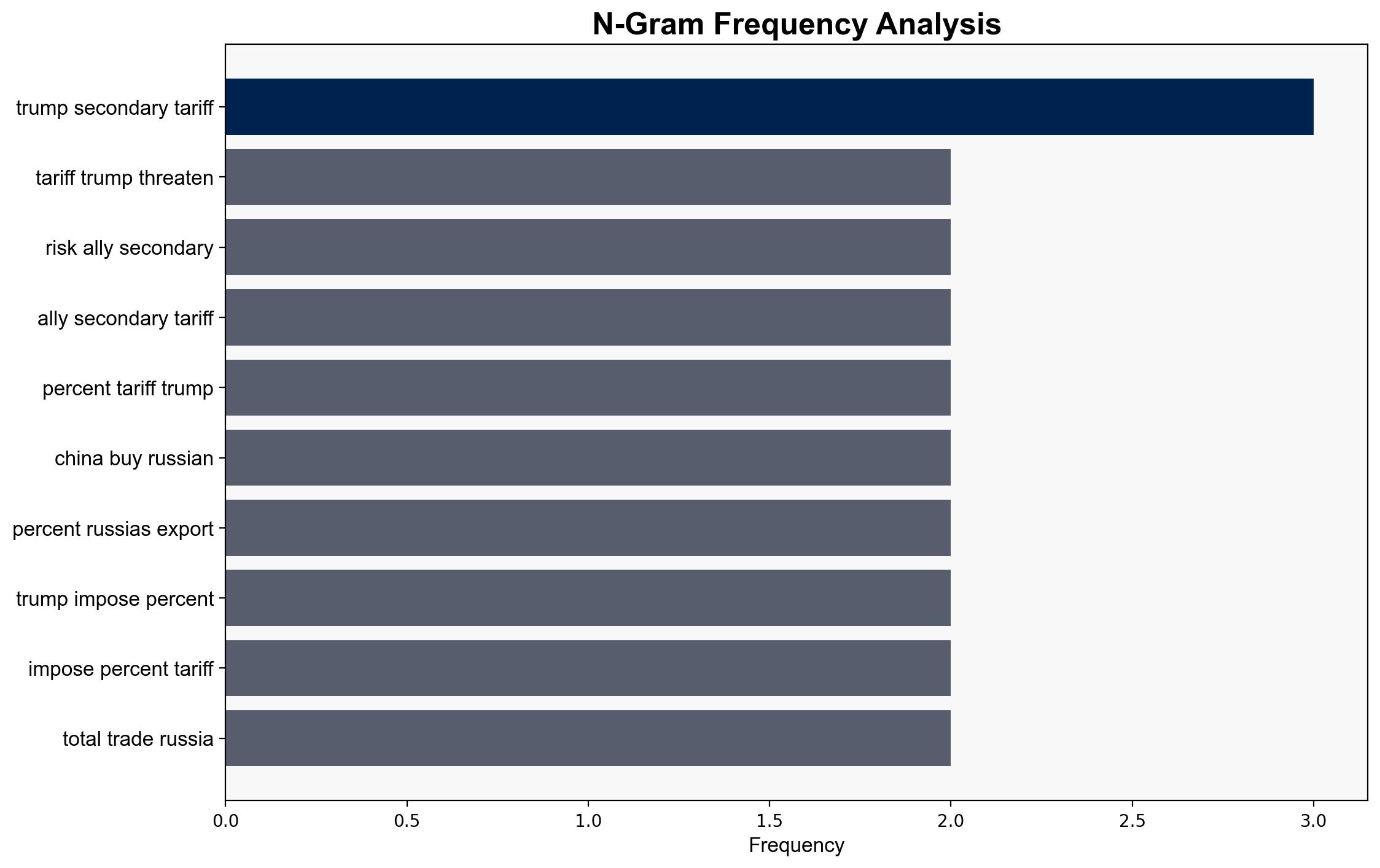Why Trumps secondary tariffs on Russia could bite the US its allies too – Al Jazeera English
Published on: 2025-08-07
Intelligence Report: Why Trump’s Secondary Tariffs on Russia Could Bite the US and Its Allies Too – Al Jazeera English
1. BLUF (Bottom Line Up Front)
The imposition of secondary tariffs by Trump on Russia is likely to have unintended negative consequences on the US and its allies, potentially exacerbating economic tensions and diplomatic relations. The most supported hypothesis suggests that these tariffs will strain alliances and economic partnerships, particularly with nations like India and China. Confidence Level: Moderate. Recommended action is to reassess the tariff strategy to minimize collateral damage to allied economies and maintain diplomatic leverage.
2. Competing Hypotheses
Hypothesis 1: Trump’s secondary tariffs will effectively pressure Russia into a ceasefire by isolating its economy and reducing its revenue from exports, thereby achieving the intended diplomatic outcome.
Hypothesis 2: The secondary tariffs will backfire, harming US allies economically and diplomatically, leading to strained relations and reduced cooperation in other strategic areas.
Using ACH 2.0, Hypothesis 2 is better supported due to the significant economic interdependencies between the US, its allies, and Russia. The potential for economic backlash and diplomatic fallout is high, as evidenced by the reactions from India and China.
3. Key Assumptions and Red Flags
– Assumption: Russia will be economically pressured enough by the tariffs to change its stance on Ukraine.
– Red Flag: The assumption that allies will align with the US strategy despite economic harm is questionable.
– Cognitive Bias: Overconfidence in the effectiveness of economic sanctions without considering the resilience and adaptability of targeted nations.
– Missing Data: Detailed economic impact assessments on US allies are not fully explored.
4. Implications and Strategic Risks
– Economic: Potential for significant trade disruptions with allies, leading to increased costs and market instability.
– Geopolitical: Risk of weakening alliances and reducing US influence in strategic regions.
– Psychological: Erosion of trust among allies, leading to hesitancy in future cooperative efforts.
– Escalation: Potential for retaliatory measures from affected nations, increasing global trade tensions.
5. Recommendations and Outlook
- Reevaluate the tariff strategy to include diplomatic consultations with key allies to mitigate economic impacts.
- Develop contingency plans for potential retaliatory actions by affected nations.
- Scenario Projections:
- Best Case: Russia concedes to ceasefire, and economic impacts are minimized through strategic diplomacy.
- Worst Case: Escalation of trade wars, leading to global economic downturn and weakened alliances.
- Most Likely: Short-term economic strain on allies with potential for long-term diplomatic repercussions.
6. Key Individuals and Entities
– Donald Trump
– Vladimir Putin
– Volodymyr Zelenskyy
– Steve Witkoff
– China, India, European Union
7. Thematic Tags
national security threats, economic sanctions, international diplomacy, trade relations





